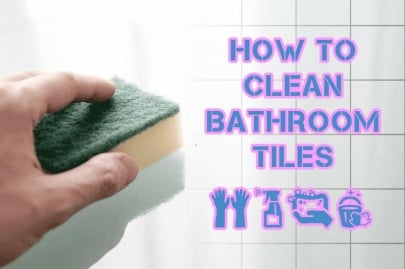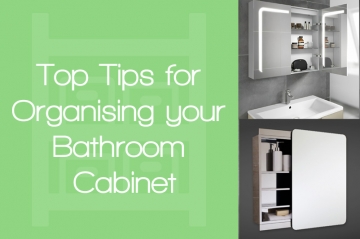How to Clean Bathroom Tiles

How to Clean Bathroom Tiles
The bathroom should be one of the most frequently cleaned areas in any home. Between being walked on, frequently splashed with water and being exposed to more vapour than any other room, it's especially important to keep your bathroom clean. However, bathrooms present some unique challenges due to their tiled surfaces and you'll need to remove dirt from both your grout and tiles themselves. There's no single answer to how often you need to clean your tiles; every homeowner is different depending on the number of users, whether you bathe or shower and other variables. You may need to clean your tiles monthly or as rarely as a few times per year. There are a number of ways to clean your bathroom tiles, with either modern cleaning products or tried and tested methods using homemade solutions. Whether you're happier using lemon juice and baking soda or a steam cleaner and bleach, here are some tips on how to clean bathroom tiles.
Basic Cleaning
A classic, time tested method of cleaning tiles is a simple wipe with vinegar. By mixing white or cleaning vinegar with water, you can create a cleaning fluid that will be effective against most dirt on your tiles and any glass surfaces in your bathroom. Mix equal parts vinegar and water, then just dab a cloth and use it to clean the tiles. You can dry them by hand or simply wait for them to dry naturally. As a general tip, it's always best to clean your wall tiles before your floor; you don't want to spend an hour cleaning your floor only to cover it with displaced dirt from your walls.
Lemon juice produces similar results to vinegar. It is slightly acidic and will break down dirt without damaging your tiles. You can either use a sponge that has been dampened with lemon juice, or fill a spray bottle and then apply it to your tiles. You'll want to wipe the lemon juice away with a cloth or sponge to rinse it, otherwise your bathroom will smell strongly of lemon for the foreseeable future.
There are now a huge variety of cleaning products that will clean your tiles, both general purpose cleaner and fluid specifically formulated for tiles. These will usually be available in spray bottles and are generally extremely simple to use; just a small matter of lightly spraying the cleaner onto your tiles, then wiping it away to remove traces of dirt. Some other cleaners may be provided in powder form and will need to be diluted with water before they're applied to your tiles.
Advanced Cleaning
Baking soda is one of the classic ways of removing dirt around the home, as well as being an effective way of removing plaque from your teeth. If you want to use it as bathroom cleaner, you'll want to mix it into a special formula. Mix half a cup of baking soda, a quarter cup of hydrogen peroxide and a teaspoon of washing up liquid to give your tiles a gleaming finish. Put the mixture into a spray bottle and shake it to ensure it's mixed properly, then spray it onto your tiles. This unique blend of different cleaners should weaken or remove most of the dirt on your tiles within ten minutes, allowing you to wipe it away with a wet cloth or sponge with little effort.
If baking soda isn't sufficient to clean your tiles, you might want to use a bleach mix. Use one part bleach to three parts water and mix them together. You can either apply this mix directly to your walls or use it in a spray bottle for a thin, even layer of cleaner, then wipe it away with a damp cloth. Be sure to wear rubber gloves and to ventilate your bathroom properly before using bleach as it produces fumes that are potentially dangerous if allowed to build up. Ammonia can be used instead, for similar results; simply mix one part ammonia with two parts water and spray the mixture onto your bathroom tiles. After about an hour, it'll be ready to wipe away. The same issues apply as with bleach, so be sure to wear thick rubber gloves and to ventilate your bathroom properly before using it. Whichever you choose, DO NOT combine bleach and ammonia with each other; doing so will quickly produce lethal chlorine fumes.
Steam cleaners offer a chemical-free alternative and will remove the majority of stains from any surface. Usually with an apperance similar to vacuum cleaners, these devices use extremely hot water vapour to break down dirt and remove it. Steam cleaners are effective at removing dirt from most surfaces (and removing wallpaper, so it's best to keep it to materials such as tiles) and only require electricity and water to use. There are a number of reasonably priced steam cleaners available from hardware and DIY stores but you're probably better off renting one from a local supplier. Unless you plan on using it very frequently, you'll save both money and storage space, as well as being able to use an industrial quality cleaner. A steam cleaner will usually only be needed for severe stains and not for regular bathroom cleaning.
Cleaning Grout
If you're cleaning your tiles, you'll also want to clean your grout. While tiles tend to be easy to wipe clean thanks to their smooth surfaces, grout has a rougher surface and retains dirt more quickly, often leading to it becoming stained and discoloured if not cleaned properly.
As with tiles themselves, you can use a mix of baking soda and water or white vinegar to clean grout. Mix equal parts baking soda and water to create a special paste, then use a stiff brush to the grout and scrub. An old toothbrush will work well in this situation, especially if you have a old head for an electric brush (just be sure to switch back before using it again, you don't want to brush your teeth with grout dirt or bleach). Once you're satisfied with your work, just wipe away the paste with a wet cloth.
For a more intensive cleaning, bleach can be used. Be aware that using bleach on darker coloured grout will likely fade it, meaning it should only be used on white grout to avoid ruining the appearance of your bathroom. As before, make sure your windows and vents are open and wear rubber gloves to protect yourself, then simply apply the bleach to your grout with a stiff-bristled brush and scrub it. Once you're done scrubbing, be sure to wipe the bleach away with a damp cloth or sponge and you should be left with brighter, cleaner grout.
However well you look after it, it's almost inevitable that your bathroom grout will eventually become discoloured and lose its bright white appearance. If cleaning fails to improve the appearance of your grout, there are a number of grout pens that can restore it to its former glory or our guide explores how to replace old tile grout. Grout pens are very simple to use, as easy as drawing a line along the top of your existing grout, and will help keep your grout looking as bright as its accompanying tiles.
Keeping Tiles Clean
Cleaning tiles can be a struggle, so it's worth some extra effort to keep them clean for longer. After cleaning your tiles and grout, you can apply a layer of car wax to your tiles, resulting in a smooth surface that will cause soapy or dirty water to slide away and prevents mould and mildew from growing. As an added benefit, wax will make your tiles gleam, leaving your bathroom more beautiful than ever. Exactly how to apply car wax will vary from product to product but it's usually no more complicated than dabbing a cloth in the wax and then rubbing it evenly across your tiles. You can also wax your bathroom floor tiles but you'll need to make sure to give them a thorough buffing afterwards, otherwise you'll end up a slippery surface, especially when it's wet.
Related Posts
We have put together our top tips for organising your bathroom cabinet, designed to help you to get to work and have it sorted in no time at all.
Wall hung, small, back to wall, and corner toilets can help you make the most of your small cloakroom space. Learn more about these options and how to maximize space in your cloakroom.
Shower doors are one part of your bathroom that can quickly get to the stage where they look a little grubby, and the bad news is that they can be tricky to clean. To help you work out the best way to clean your shower door, we have put together some of our cleaning tips to ensure that you don't spend all your time cleaning and still look the best they can.




